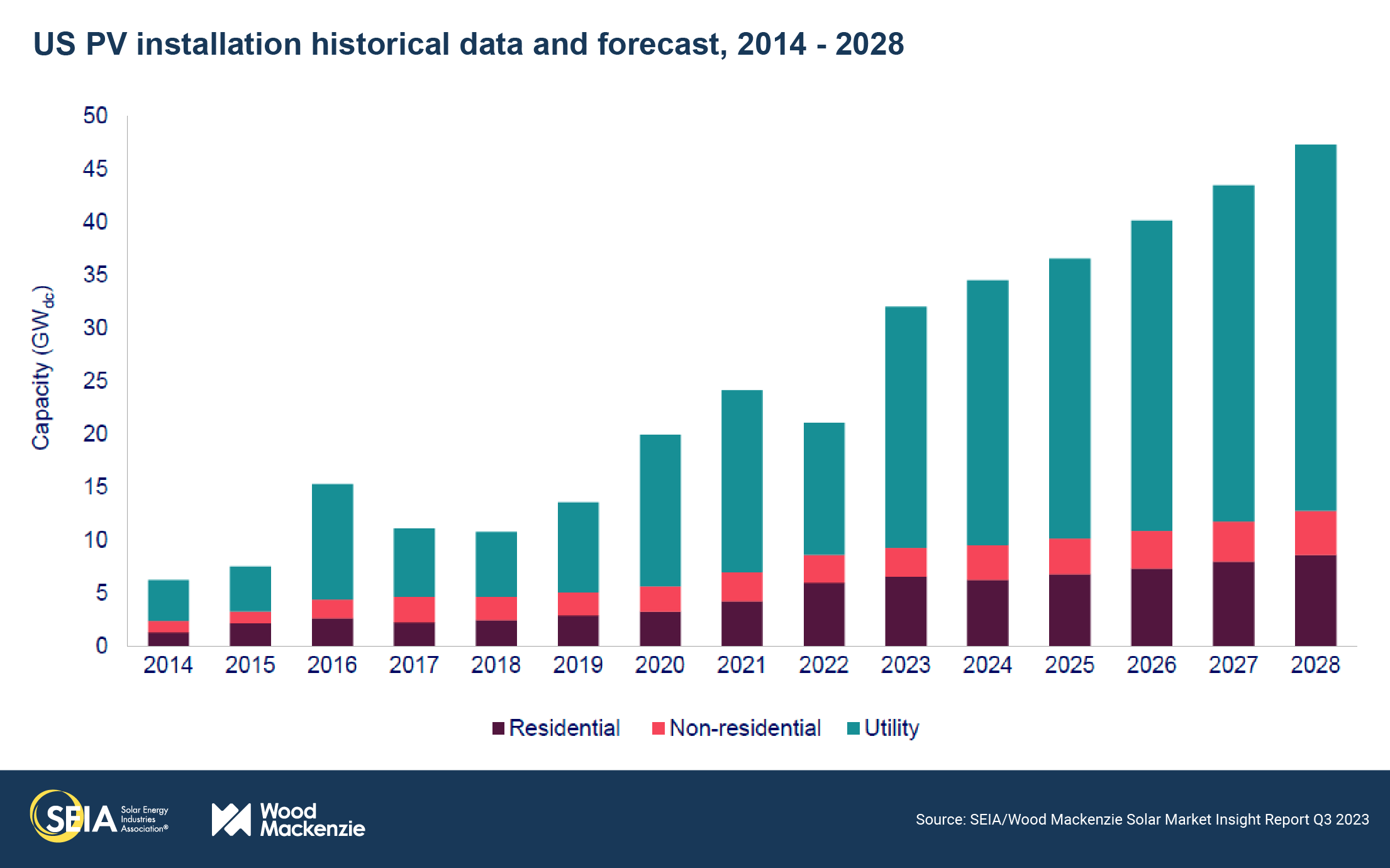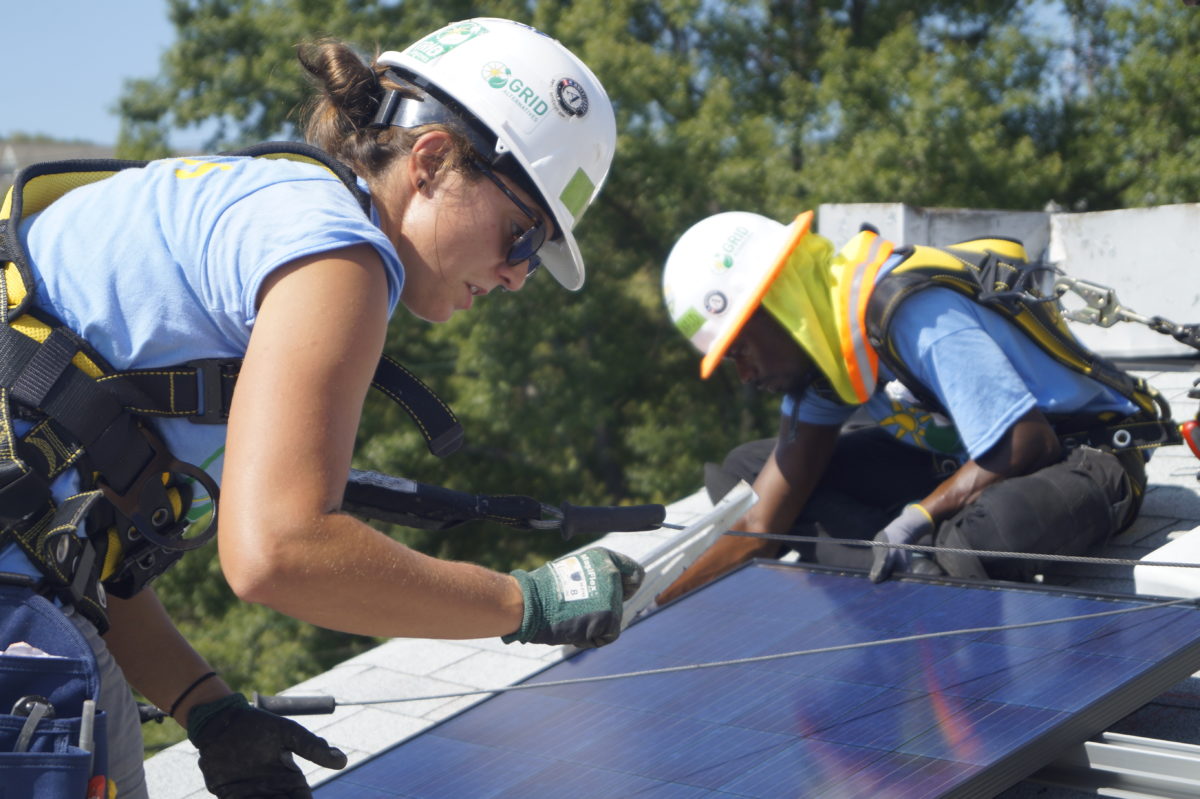The Solar Energy Industries Association (SEIA) and Wood Mackenzie have released a Q3 2023 solar market insight report, reflecting on data from the first half of 2023.
The report found that the U.S. solar market installed 5.6 GW in Q2 2023, a 20% jump over Q2 2022 totals. The industry has installed nearly 12 GW in the first half of 2023, indicating volumes are set to grow year-over-year after experiencing contraction in 2022.
Residential solar had a record 1.8 GW of installations in Q2 2023 as Californians rushed to secure more lucrative export compensation rates under net energy metering (NEM) 2.0, which transitioned to NEM 3.0 in April. Wood Mackenzie said it expects the installation surge to continue through Q3, beginning to taper off in Q4.
Commercial solar added 345 MW in the second quarter, declining 9% compared to the previous year’s Q2. Despite this, the count of projects installed increased 7%, which Wood Mackenzie said is an indication of relatively stable volumes for the segment.
Community solar stalled out some in Q2 2023, adding 226 MW. This is flat compared to last quarter and a 16% decrease over Q2 2022. The report highlighted that there is momentum behind the sector, but challenges around interconnection, market penetration, siting, and permitting are bogging down growth.
Adding the largest capacity among the sectors, utility-scale solar installed 3.3 GW in Q2 2023, representing 22% growth over Q2 2022. This year, the sector has rebounded from supply chain limitations that led to project delays and cancellations. Wood Mackenzie forecasts that total new utility-scale installations will reach 172 GWdc between 2023-2028.
Across sectors, Wood Mackenzie expects a 52% growth in installations year-over-year, rebounding from a 13% pullback in 2022.

Perhaps the most significant development in the U.S. solar market over the last year is not in installation figures, but in boosted domestic manufacturing capacity. Wood Mackenzie forecast solar module manufacturing will grow an order of magnitude from 10.6 GW pre-Inflation Reduction Act (IRA) to 108.5 GW in 2026.
“The United States is now a dominant player in the global clean energy economy, and states like Florida, Texas, Ohio, and Georgia are at the forefront of this job growth and economic prosperity,” said SEIA president and chief executive officer Abigail Ross Hopper. “The solar and storage industry is delivering abundant clean energy that is generating tens of billions of dollars of private investment, and this is just the tip of the iceberg.”
Learn more from leaders and experts about the U.S. manufacturing renaissance during the pv magazine USA Roundtables 2023 event on October 12.
“In our five-year outlook, annual growth in the solar industry will average 15%,” said the report. “Implementation of the IRA, which was enacted just over a year ago, has been slow and complicated. But the long-term policy certainty provided by the legislation continues to drive our expectations for double-digit growth in the solar industry.”
Wood Mackenzie said the market will start to realize the benefits of the IRA in 2024 and 2025. However, it has decreased forecasts for the mid-late 2020s by 4% due in part to persistent challenges with interconnection queue delays.
“In the year since its passage, the IRA has undoubtedly caused a wave of optimism across the solar industry. Announcements for domestic module manufacturing have exploded, promising more stable solar module supply in the future,” said Michelle Davis, head of global solar at Wood Mackenzie. “Now the challenge becomes implementation — the industry is waiting for clarity on several IRA provisions before moving forward with solar investments.”
This content is protected by copyright and may not be reused. If you want to cooperate with us and would like to reuse some of our content, please contact: editors@pv-magazine.com.









By submitting this form you agree to pv magazine using your data for the purposes of publishing your comment.
Your personal data will only be disclosed or otherwise transmitted to third parties for the purposes of spam filtering or if this is necessary for technical maintenance of the website. Any other transfer to third parties will not take place unless this is justified on the basis of applicable data protection regulations or if pv magazine is legally obliged to do so.
You may revoke this consent at any time with effect for the future, in which case your personal data will be deleted immediately. Otherwise, your data will be deleted if pv magazine has processed your request or the purpose of data storage is fulfilled.
Further information on data privacy can be found in our Data Protection Policy.